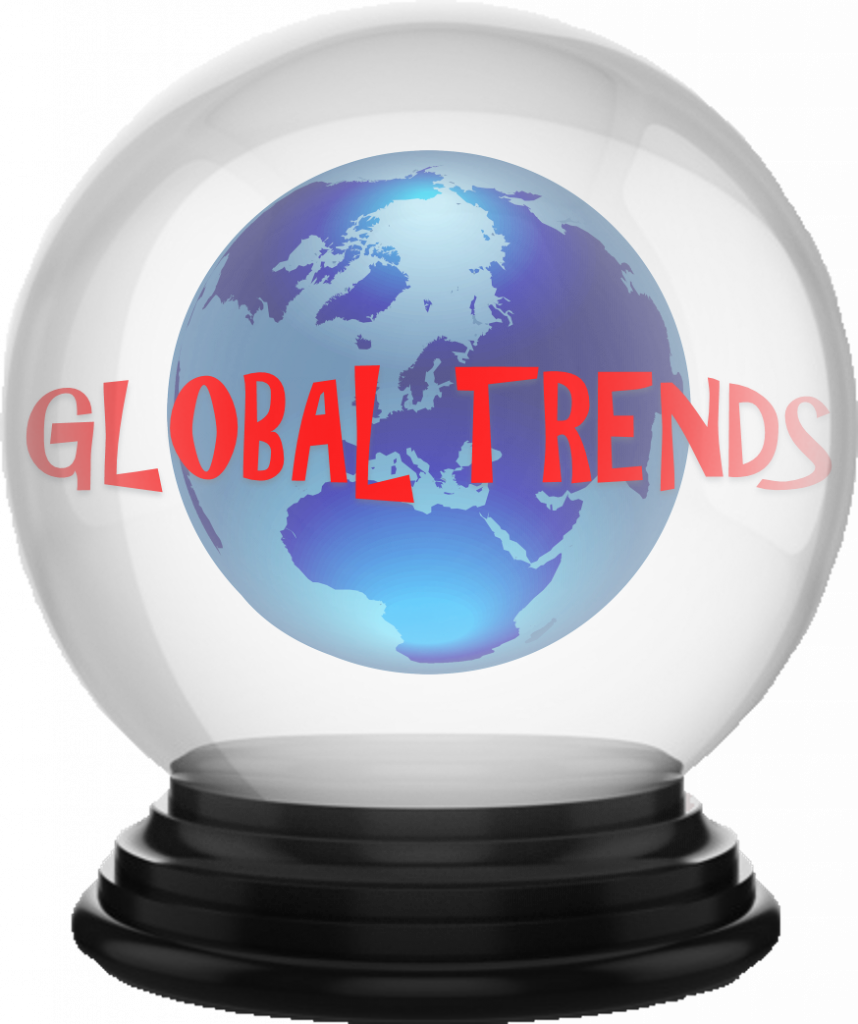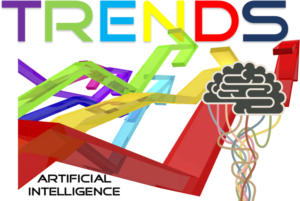Traditionally, the end of the old year and the beginning of the new year has been a season of predictions offered up by brave prognosticators. Recently, I’ve noticed pundits are more likely to discuss trends than they are to make predictions. Perhaps they’ve learned a lesson taught over 2500 years ago by 6th Century BC Chinese poet Lao Tzu, who wrote, “Those who have knowledge, don’t predict. Those who predict, don’t have knowledge.” Trends are generally safer to discuss because they have a historical track record. Occasionally, however, extrapolating the past doesn’t work. You only have to go back a year and review discussions about 2020 and you’ll find few, if any, experts predicted the year would be upended by a global pandemic. Such paradigm shifts are rare; however, they do occur. Having made that point, I nevertheless feel safe in saying that the pandemic will have a significant effect on events in 2021. The good news is that several vaccines appear to be effective against the latest virus. The bad news is that most people won’t be able to get vaccinated until well into the year. Aside from the continuing effects of the pandemic, what else are analysts saying about the coming year?
Analysts from Frost & Sullivan see megatrends in twelve areas: Urbanization, smart technologies, society, connectivity, retail, climate change, energy, economics, infrastructure, healthcare, mobility, and new business models. What is a megatrend? According to Frost & Sullivan, “Mega Trends are transformative, global forces that define the future world with their far reaching impacts on businesses, societies, economies, cultures, and personal lives.”[1] Below is a brief discussion of the first six of the twelve megatrends identified by Frost & Sullivan analysts. The remaining six megatrends will be discussed in Part 2 of this article.
Urbanization. The trend toward urbanization has been ongoing for some time. The global pandemic caused some critics to question the future of cities; however, most experts believe urbanization will continue unabated for decades to come. The United Nations notes, “With over 50 per cent of the global population, 70 per cent of global energy use and up to 85 per cent of economic activity, cities and urban areas hold the key to sustainable development. … Success in addressing any of the challenges posed by urbanization will generate direct advantages or indirect co-benefits across the entire sustainable development agenda. Among policy interventions, urban policy may offer the greatest impact across the three dimensions of society, the economy and the environment.”[2]
Smart technologies. Whenever you hear or read about something being “smart” or “intelligent,” you can be fairly confident that cognitive technologies (often referred to as artificial intelligence, machine learning, or cognitive computing) are involved. Every year businesses are finding new ways to use cognitive technologies. Frost & Sullivan analysts note, “A smart product is characterized by an intelligent sensing technology that is increasingly being integrated with Internet technologies, thereby allowing the product to react to and communicate with the changing environment around it. This leads to optimal operations and improvement in efficiency.” What they are describing is often denoted as the Internet of Things (IoT) ecosystem with sensors on one end, advanced analytics on the other end, connected by the IoT. Frost & Sullivan analysts divide smart technologies into three levels. On the first level are technologies equipped with a basic sensing mechanism. The second level contains technologies with a basic sensing mechanism plus one-way data communication. Level three contains technologies with a basic sensing mechanism plus two-way data communication. United Nations analysts note, “The combination of the near-universal applicability of digitization with transformative technological breakthroughs defines the digitalization megatrend. This process is unleashing social and economic structural shifts that are long term and irreversible, with far-reaching consequences — both positive and negative — for humanity.”
Society. United Nations analysts note, “The world’s population has undergone major transformations over the last 75 years. The global population growth rate peaked in the 1960s, and has been slowing since then, possibly heading towards a standstill by the end of this century. In step with this trend, attention has shifted from population growth to population age structures, specifically ‘population ageing’, rooted primarily in declining fertility and increasing life expectancy.” During a recent CBS “60 Minutes” episode, a health expert stated that half of the children now being born in the U.S. and Europe will live to see their 103rd or 104th birthday.[3] This aging trend will affect many economic areas including housing, healthcare, and consumer products.
Connectivity. Frost & Sullivan analysts believe the future will be characterized by connected living ecosystems. They explain, “Connected Living describes a world in which consumers use many different devices to experience compelling new services that integrate video, voice, and data services to provide access and ubiquitous connectivity anytime and anywhere.” They add, “Connected life contains three important aspects of connected home, connected city, and connected work.” Most people are now familiar with home gadgets that connect everything from doorbells to lights. These gadgets will only proliferate in the years ahead. Most people are also familiar with the concept of smart cities. Urbanization trends demand cities use resources more efficiently and effectively to improve the quality of urban life. The arrival of fifth generation telecommunications will create new opportunities to connect urban systems. On the work front, Wayne Kurtzman (@WayneNH), IDC Research Director for Social, Communities & Collaboration, notes, “The last ten years saw businesses adopt collaborative applications, but the ‘Work from Home’ needs generated by the COVID-19 pandemic has created a hyper-acceleration of adoption. Prior to the pandemic, this market was already growing at over 20% annually according to IDC, but COVID-19 enabled the adoption of collaborative applications to accelerate by five years.”[4] Frost & Sullivan analysts conclude, “Connectivity will accelerate convergence of industries, products, technologies and competition.”
Retail. One economic area dramatically affected by the pandemic was retail. Brick-and-mortar retail was already in decline when the pandemic struck — thanks in part to the rise of e-commerce. The pandemic accelerated this trend. Black Friday sales epitomized the trend. Lauren Thomas (@laurenthomas) reports, “Traffic at stores on Black Friday fell by 52.1% compared with last year, according to preliminary data from Sensormatic Solutions, [whereas] online spending on Black Friday surged 21.6% to hit a new record, according to data from Adobe Analytics.”[5] Experts at Idea Communication note, “Driven by the digital revolution, the retail industry is going through a transformation — one that has completely altered the shopping experience for the modern consumer. According to the third annual Digital Consumer Study, almost 50% of consumers report having performed shopping-related tasks on their mobile phones in the past three months. Consumers surveyed say that they use digital technology to research, browse and purchase, sometimes all on the same website. With the advent of e-commerce and other retail-friendly technologies, consumer demands have shifted towards expedience and convenience.”[6]
Climate change. I think it’s fair to say that no megatrend is having a more significant nor a more negative effect on the world as climate change. United Nations analysts note, “Nature in all its forms is being significantly altered by human activity everywhere on the planet. Disruptions in ecosystems, losses of biodiversity and wildlife, fundamental changes in land use, and the declining quality of air, water and soil have consequences for economic development and livelihoods. Awareness of the damage being done to the natural environment has been heightened by the increasingly visible phenomenon of climate change, caused by the human-induced warming of the atmosphere.” McKinsey & Company analysts note, if historical trends had continued, the world would have warmed by 5° Celsius by 2100. The good news is that historical trends didn’t continue. The bad news is that we’re still on a track to raise the global temperature by 3.5° Celsius by mid-century.[7] That could prove disastrous. According to McKinsey & Company analysts, “Adapting to climate change is critical because, as a recent McKinsey Global Institute report shows, with further warming unavoidable over the next decade, the risk of physical hazards and nonlinear, socioeconomic jolts is rising. Mitigating climate change through decarbonization represents the other half of the challenge. Scientists estimate that limiting warming to 1.5 degrees Celsius would reduce the odds of initiating the most dangerous and irreversible effects of climate change.”[8] Reaching that goal won’t be easy. They explain, “All of the 1.5°C scenarios would require major business, economic, and societal shifts — each enormous in its own right, and with intricate interdependencies.”
It takes little imagination to see how these megatrends can (or will) affect the future of businesses, societies, economies, cultures, and personal lives. In Part Two of this two-part article, I will discuss the remaining six areas in which Frost & Sullivan analysts assert megatrends taking place.
Footnotes
[1] “World’s Top Global Mega Trends To 2025 and Implications to Business, Society and Cultures,” Frost & Sullivan, 2020.
[2] “Shaping the Trends of Our Time,” United Nations, September 2020.
[3] Leslie Stahl, “90+,” CBS 60 Minutes, 22 November 2020.
[4] Wayne Kurtzman, “The next normal is collaborative and people-centric,” Asana Blog, 17 June 2020.
[5] Lauren Thomas, “Black Friday shopping in stores craters 52% during pandemic as e-commerce sales surge,” CNBC, 28 November 2020.
[6] Staff, “Consumer Trends 2021,” Idea Communication, November 2020.
[7] Staff, “The 1.5-degree challenge,” McKinsey & Company, 2020.
[8] Kimberly Henderson, Dickon Pinner, Matt Rogers, Bram Smeets, and Daniela Vargas, “Climate math: What a 1.5-degree pathway would take,” McKinsey & Company, 30 April 2020.





